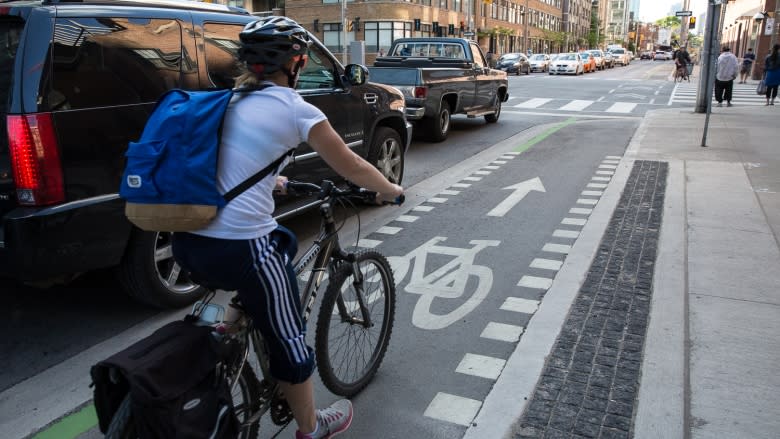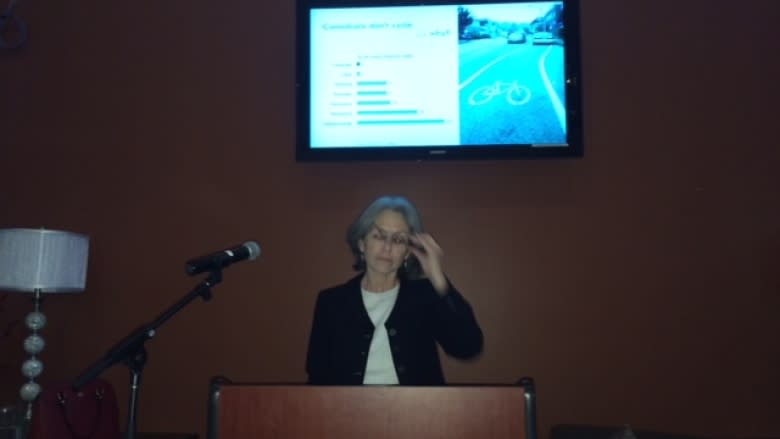Prof. calls for separated bike lanes in Saskatoon to encourage cycling
Bad news about the "sharrows" painted on some of Saskatoon's downtown street lanes — they're neither safe for cyclists, nor do they entice people to cycle on downtown streets.
That's the conclusion indicated in research presented last night at a Saskatoon talk by Kay Teschke, a professor in the School of Population and Public Health at the University of British Columbia.
Teschke spoke about the findings of two of her studies, one on what type of bike routes entice people to cycle, the other on what type of bike routes are the most dangerous.
"To motivate cycling, route type matters," she told her audience, which included several members of the advocacy group Saskatoon Cycles.
In the study on bike route preferences, Teschke found that bike lanes physically separated from motor traffic and on quiet streets are the most preferred by cyclists, while busy city streets are among the least preferred.
Teschke found that busy streets with parked cars and no cycling infrastructure are both the least safe and least appealing to cyclists. Perhaps not surprisingly, cyclists of every level of ability and devotion will choose routes that are easy and enjoyable to travel over those where they feel unsafe.
And sharrows, the painted symbols on street lanes, are not much help.
The sharrows were introduced in downtown Saskatoon six years ago. Some of them direct vehicles and bikes to travel single file down one lane, while others reserve a lane for bikes.
"I'm guessing if you're like any other city that put sharrows in, it didn't make much difference to cycling on those streets," Teschke told the CBC after her presentation. "I think that you probably didn't have a big increase, and you didn't see kids cycling, and you didn't see more women cycling. Whereas with separated bike lanes, which have got good evidence now, that's what you start to see."
She found separated bike lanes are the safest alternative, reducing the chance of injury by 90 per cent, compared to busy streets with no cycling infrastructure.
Teschke also said that the wide streets and traffic levels in Saskatoon mean that implementing separated bike lanes shouldn't present too much of a challenge.
"When I compare that to the cities I'm used to, I just think, 'wow you guys have a huge opportunity,'" she said.
Correct design flaws in dedicated bike paths
Off-street dedicated bike paths are the most preferred choice for cyclists, but their safety needs improvement, Teschke said.
They require straight sight lines and better lighting.
While a meandering pathway with lots of curves may look pretty, this design is no safer for bike paths than it is for vehicle roadways. In addition, obstacles such as posts, poles and benches need to be placed further away.
These are all points to be taken into consideration this weekend, during Saskatoon's "cycling summit", when activists will draw up a proposed grid of cycling routes for the city.



